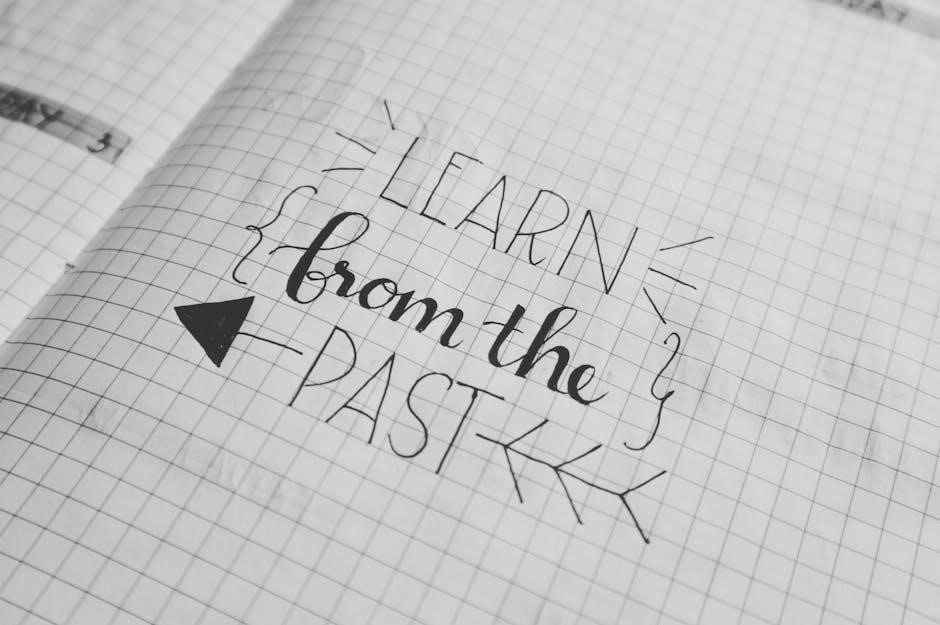A Colorado Notice of Intent to Lien is a formal warning sent to property owners about unpaid debts, aiming to prevent lien placement. It’s crucial for ensuring timely payments in construction projects, protecting both contractors and suppliers by outlining the intent to file a lien if payment isn’t received promptly.
1.1 Definition and Purpose
A Notice of Intent to Lien in Colorado is a formal document required by state law, informing property owners and contractors of unpaid debts related to labor, materials, or services provided. It serves as a warning that a mechanics lien will be filed unless payment is received within a specified timeframe. The purpose is to ensure payment disputes are addressed before escalating to legal action, protecting the rights of contractors, subcontractors, and suppliers. This notice is a critical step in Colorado’s lien process, ensuring all parties are aware of potential lien filings and encouraging prompt resolution of payment issues.
1.2 Importance in Construction Projects
The Notice of Intent to Lien holds significant importance in Colorado construction projects as it establishes a clear communication channel between contractors, suppliers, and property owners. This document ensures that unpaid parties can assert their right to payment before resorting to filing a mechanics lien, which can delay project completion and harm relationships. By providing a formal warning, it encourages prompt payment resolution, reducing the likelihood of disputes and legal complications. Additionally, it safeguards the interests of laborers and material providers, ensuring they receive fair compensation for their contributions to the project. This notice is a vital tool in maintaining financial stability and trust within the construction industry.

Legal Requirements for Serving the Notice
In Colorado, the Notice of Intent to Lien must be served at least 10 days before filing, via personal service or certified mail, with an affidavit of service required.
2.1 10-Day Notice Period
The Colorado Notice of Intent to Lien requires a mandatory 10-day notice period before filing the lien. This period ensures property owners and contractors are informed about unpaid debts. The notice must be served via personal delivery or certified mail, with proof of service maintained. Failure to adhere to this timeline invalidates the lien process. The notice period begins when the document is mailed or delivered, not when it is received. Proper documentation, including an affidavit of service, is essential for compliance. This step ensures transparency and provides the recipient an opportunity to resolve payment issues before a lien is filed. Missing this deadline can result in legal consequences and denial of lien rights.
The Notice of Intent to Lien in Colorado must be served using specific methods to ensure validity. Personal service, where the document is directly delivered to the recipient, is a common approach. Additionally, certified or registered mail with a return receipt is accepted, providing proof of delivery. Proper documentation, such as an affidavit of service or a mailing receipt, must be maintained. Electronic methods are not typically recognized under Colorado law for this purpose. The method chosen must comply with state regulations to ensure the notice is legally effective. Proper service is critical for maintaining the integrity of the lien process and protecting all parties involved. Failure to follow these methods can lead to the dismissal of the lien claim. The deadline for filing a lien in Colorado is strict and must be adhered to for the claim to be valid. Under Colorado law, a mechanics lien must be filed within four months from the last date labor or materials were furnished to the project. For public projects, the deadline is three months from the last furnishing of labor or materials. The Notice of Intent to Lien must be served at least 10 days before the lien is filed. Failure to meet this deadline results in the loss of lien rights. Proper documentation and timely filing with the county clerk and recorder are essential to ensure the lien is legally recognized and enforceable. Missing this deadline can have severe consequences for unpaid claimants. Serving the Notice of Intent to Lien involves preparing the document, delivering it to owners and contractors via personal service or certified mail, and documenting the process with an affidavit. Preparing a Colorado Notice of Intent to Lien document requires careful attention to detail to ensure compliance with state laws. The notice must include the claimant’s name, address, and contact information, as well as a detailed description of the property and the work or materials provided. It should also specify the unpaid amount, the payment deadline, and a clear statement of intent to file a lien if payment is not received. Using downloadable templates from trusted sources can help ensure the document meets legal requirements. Accuracy is critical to avoid delays or legal challenges. Proper preparation ensures the notice is valid and enforceable under Colorado law. Serving the Notice of Intent to Lien in Colorado must be done at least 10 days before filing the lien. The notice should be delivered to the property owner and the principal contractor via personal service or certified mail with a return receipt. Proper service ensures the recipient has formal notice of the unpaid claim and the intent to file a lien. Proof of service, such as an affidavit or return receipt, is essential to verify compliance with legal requirements. Timely and correct service is critical to maintaining the validity of the lien process under Colorado law. Documenting service through an affidavit is a critical step in Colorado’s Notice of Intent to Lien process. An affidavit of service must be completed and notarized, detailing how the notice was delivered—whether by personal service, certified mail, or other approved methods. This affidavit serves as legal proof that the owner and contractor received the notice within the required timeframe. It must include specifics like the date, method of delivery, and the names of the parties served. Filing this affidavit with the County Clerk and Recorder ensures compliance with Colorado Revised Statutes and strengthens the validity of the lien claim. Proper documentation prevents disputes and maintains the integrity of the process. Free downloadable Notice of Intent to Lien Colorado PDF templates are available online, offering fillable fields and customizable options for easy preparation and legal compliance. Free Notice of Intent to Lien Colorado PDF templates are available from reputable sources like Levelset and Templateroller. These platforms offer downloadable forms in PDF or Word format, allowing users to fill them out online or print for manual completion. Many templates include fillable fields, enabling easy customization with specific project details. Websites like Templateroller provide step-by-step guidance to ensure accurate completion. These templates are designed to meet Colorado’s legal requirements, ensuring compliance with Section 38-22-109 of the Colorado Revised Statutes. By using these resources, contractors and suppliers can efficiently prepare and serve the Notice of Intent to Lien, streamlining the process to secure payment rights. Editing and customizing a Colorado Notice of Intent to Lien template is straightforward. Download the PDF or Word file and use a PDF editor or word processor to fill in the required fields. Enter the claimant’s name, address, and contact information, followed by the property owner’s details and the project’s legal description. Specify the unpaid amount, a description of the labor or materials provided, and the deadline for payment. Ensure all information is accurate and compliant with Colorado’s lien laws. Save the document and print it for serving or email it as needed. Customize the template to fit your specific situation while adhering to the legal requirements outlined in Section 38-22-109 of the Colorado Revised Statutes. The Colorado Notice of Intent to Lien is typically provided in PDF format to ensure clarity and professional presentation. Download the template and open it using a PDF editor or viewer like Adobe Acrobat. Print the document on standard 8.5×11-inch paper, ensuring all text and formatting remains intact. Before printing, verify that the PDF is not password protected. Once printed, review the document for accuracy and completeness. Ensure all fields are filled out correctly, including the claimant’s information, property description, and payment deadline. Print multiple copies if needed for service to the owner, contractor, and for your records. Always use high-quality paper to maintain professionalism and compliance with Colorado’s legal requirements. The County Clerk and Recorder accepts and records the Notice of Intent to Lien, maintaining official records and providing documentation for legal processes in Colorado. Colorado has 64 counties, each with a Clerk and Recorder office responsible for recording legal documents. Key offices include Adams County Clerk (720-523-6020), Arapahoe County Clerk (303-795-4200), Boulder County Clerk (303-413-7770), Denver County Clerk (720-865-8400), El Paso County Clerk (719-520-6200), Jefferson County Clerk (303-271-8121), Larimer County Clerk (970-498-7860), Weld County Clerk (970-304-6530), and others. These offices process and maintain records for notices of intent to lien, ensuring compliance with state laws. A comprehensive list of all county offices, including addresses and contact details, is available for those needing to file or record legal documents statewide. Filing the Notice of Intent with the county recorder is a critical step in Colorado’s lien process. The recorder’s office ensures the document is legally recorded and made part of public records. Proper filing requires submitting the notice, along with any required fees, to the county where the property is located. The notice must include detailed property descriptions and be accompanied by an affidavit of service. Once filed, the recorder timestamps and stores the document, providing official proof of intent to lien. This step is essential for maintaining legal rights and proceeding with the lien process if necessary. Accuracy and adherence to local procedures are vital to avoid delays or rejections. Obtaining the necessary documentation for a Notice of Intent to Lien in Colorado involves gathering accurate and complete records. This includes the Notice of Intent document itself, which can be downloaded as a PDF or obtained from the County Clerk’s office. Additional required documents may include proof of service, such as an affidavit, and detailed property descriptions. It is essential to ensure all information is accurate and complies with Colorado statutes. Proper documentation helps avoid legal issues and ensures the lien process proceeds smoothly. Always verify document requirements with the County Clerk and Recorder to guarantee compliance and avoid delays. Timely and accurate documentation is critical for upholding legal rights in construction payment disputes. Ensure timely delivery of the Notice of Intent to Lien, verify accuracy in document preparation, and maintain detailed records of service to avoid legal complications and delays. Timely delivery of the Notice of Intent to Lien is crucial to maintain legal validity. In Colorado, the notice must be served at least 10 days before filing the lien. Proper methods of service, such as personal delivery or certified mail with return receipt, ensure proof of delivery. It is essential to plan ahead to avoid missing deadlines, as failure to deliver the notice within the required timeframe can result in the lien being dismissed. Additionally, keeping a record of the delivery, including the date and method used, provides evidence of compliance with state regulations. Accuracy in preparing the Notice of Intent to Lien is paramount to ensure legal compliance and avoid delays. The document must include precise details such as the property description, amounts owed, and the parties involved. Any errors or omissions can lead to the lien being contested or dismissed. Utilizing downloadable Colorado Notice of Intent to Lien PDF templates can help ensure all required information is included. It is essential to carefully review the document for correctness before serving it to the owner and contractor. Compliance with Colorado Revised Statutes, particularly Section 38-22-109, is critical to maintaining the validity of the notice. Inaccuracies can result in costly legal challenges, emphasizing the need for meticulous preparation. Maintaining detailed records of service is essential for verifying compliance with Colorado’s lien laws. This includes documenting the date, method, and proof of delivery of the Notice of Intent to Lien. Proper documentation ensures that the notice was served correctly, adhering to legal requirements. Records should include the affidavit of service, certified mail receipts, and any other evidence of delivery. Accurate and organized records help prevent disputes and demonstrate compliance if challenges arise. Failing to maintain these records can jeopardize the validity of the lien. It is crucial to retain all documentation throughout the process, as it serves as proof of adherence to Colorado Revised Statutes, particularly Section 38-22-109. Common errors include missing the 10-day notice period, improper service methods, and incomplete or incorrect information in the notice, which can invalidate the lien process entirely. Failing to serve the Notice of Intent to Lien within the required 10-day period is a critical error. Colorado law mandates that the notice must be delivered at least 10 days before filing the lien. Missing this deadline can result in the lien being invalidated, leaving claimants without legal recourse to recover unpaid debts. Properly timing the notice ensures compliance with state statutes and maintains the legitimacy of the lien process. Using certified mail or personal service is recommended to verify timely delivery. Ignoring this requirement can lead to disputes and delay payment resolution, emphasizing the importance of strict adherence to the 10-day rule in Colorado lien law. Using improper methods to serve the Notice of Intent to Lien can invalidate the process. Colorado law requires the notice to be delivered via certified mail, return receipt requested, or personal service. Email, regular mail, or informal communication often fails to meet legal standards. Improper service can result in the lien being dismissed, as courts require strict adherence to service requirements. Claimants must ensure the notice is delivered through approved channels and that proof of service, such as a return receipt or affidavit, is obtained. Failure to follow these steps can undermine the entire lien process and leave claimants without recourse for unpaid debts. Incomplete or incorrect information in a Notice of Intent to Lien can lead to serious consequences, including the dismissal of the lien. Colorado law requires precise details, such as the property description, amounts owed, and parties involved. Missing or inaccurate information, like an incorrect legal description or mismatched figures, can render the notice invalid. This oversight may result in the lien being unenforceable, leaving claimants without legal recourse for unpaid debts. It is essential to double-check all details before serving the notice. Even minor errors can cause significant delays or defeats in court, emphasizing the importance of accuracy and attention to detail in preparing the document. Contractors often face unpaid invoices, prompting them to file a Notice of Intent to Lien. Property owners may receive notices, while payment issues are sometimes resolved post-notice. Contractors in Colorado often encounter payment disputes, leading to the use of a Notice of Intent to Lien. This document serves as a formal warning to property owners, highlighting unpaid invoices for labor or materials provided. By issuing this notice, contractors aim to prompt payment before escalating to filing a mechanics lien. Real-life scenarios frequently involve contractors who have fulfilled their contractual obligations but remain unpaid. The Notice of Intent to Lien acts as a critical step to protect their rights and ensure payment, demonstrating the legal consequences of non-payment. It is a common tool in construction disputes, emphasizing the importance of adhering to Colorado’s lien laws. Property owners in Colorado may receive a Notice of Intent to Lien when contractors or suppliers remain unpaid for labor or materials. This notice serves as a formal warning, indicating the recipient’s intent to file a lien if payment isn’t resolved. Property owners should take this document seriously, as it signals potential legal action that could impact property value or sale. Receiving such a notice often prompts owners to review contracts, assess payment disputes, and communicate with contractors to resolve the issue; It’s crucial for owners to address unpaid invoices promptly to avoid further complications, such as a mechanics lien filing, which can lead to financial and legal consequences.2.2 Methods of Service
2.3 Deadline for Filing the Lien

The Process of Serving the Notice
3.1 Preparing the Notice Document
3.2 Serving the Notice to Owners and Contractors

3.4 Documenting Service Through Affidavit

Downloadable Templates and Forms
4.1 Sources for Free Templates
4.2 How to Edit and Customize the Template
4.3 PDF Format and Printing Instructions

Role of County Clerk and Recorder
5.1 List of County Offices in Colorado
5.2 Filing the Notice with the Recorder
5.3 Obtaining Necessary Documentation

Best Practices for Filing the Notice
6.1 Ensuring Timely Delivery
6.2 Accuracy in Document Preparation
6.3 Maintaining Records of Service

Common Mistakes to Avoid
7.1 Missing the 10-Day Window
7.2 Improper Service Methods
7.3 Incomplete or Incorrect Information

Real-Life Scenarios and Case Studies
8.1 Contractors and Unpaid Invoices
8.2 Property Owners Receiving Notices
8.3 Resolving Payment Issues Post-Notice
Receiving a Notice of Intent to Lien in Colorado often motivates property owners and contractors to resolve payment disputes swiftly. Owners may negotiate payment plans or settle outstanding invoices to avoid lien filing. Contractors, on the other hand, must ensure they have fulfilled all contractual obligations before pursuing legal action. Mediation or legal advice can help both parties reach a mutually agreeable solution. Prompt resolution prevents further legal complications, protecting property values and working relationships. Ensuring payment within the specified timeframe halts the lien process, maintaining project continuity and financial stability for all involved.

Frequently Asked Questions
Q: Which states require a Notice of Intent to Lien? A: Currently, Arkansas, Colorado, Connecticut, Louisiana, Maryland, Missouri, North Dakota, Pennsylvania, Wisconsin, and Wyoming require this notice before filing a lien.
9.1 States Requiring Notice of Intent
In the United States, specific states mandate the submission of a Notice of Intent to Lien before filing a mechanics lien. These states include Arkansas, Colorado, Connecticut, Louisiana, Maryland, Missouri, North Dakota, Pennsylvania, Wisconsin, and Wyoming. Each state has its own unique requirements and timelines for serving this notice. For instance, Colorado requires the notice to be served at least 10 days before filing the lien, as outlined in Section 38-22-109 of the Colorado Revised Statutes. This legal step ensures that property owners and contractors are formally notified of potential lien actions, providing an opportunity to resolve payment disputes before escalation. Failure to comply with these state-specific regulations can result in the loss of lien rights, making it crucial to adhere to the legal requirements carefully.
9.2 Refiling for Reduced Amounts
Refiling a Notice of Intent to Lien for reduced amounts is permissible in Colorado if the initial claim is withdrawn or settled. However, the process must adhere to strict timelines and legal requirements. The original lien filing deadline, typically within four months of the last furnishing of labor or materials, still applies. If the amount owed is reduced, a new Notice of Intent may be filed, but it must align with the initial deadline. Failure to comply with these rules can result in the loss of lien rights. It is essential to ensure accuracy and timeliness when refiling to avoid legal complications and maintain the validity of the claim.
9.3 Legal Implications of Non-Payment
Non-payment in Colorado construction projects can lead to severe legal consequences, including the loss of lien rights if proper procedures aren’t followed. Failure to serve a Notice of Intent to Lien within the required timeframe can prevent the filing of a mechanics lien, leaving claimants without a legal remedy to recover unpaid debts. Additionally, improper service methods or incomplete documentation can render the lien unenforceable, further complicating payment recovery. It is crucial for contractors and suppliers to adhere strictly to Colorado’s lien laws to avoid jeopardizing their ability to secure payment through legal means. Understanding these implications is essential for maintaining financial stability in construction projects.























































